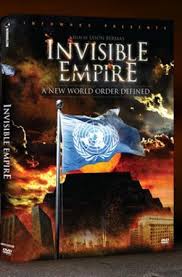
A bombshell article in today’s edition of the New York Times lifts the lid on how the brother of Afghan President Hamid Karzai, a suspected kingpin of the country’s booming opium trade, has been on the CIA payroll for the past eight years. However, the article serves as little more than a whitewash because it fails to address the fact that one of the primary reasons behind the 2001 invasion of Afghanistan was the agenda to reinstate the Golden Crescent drug trade.
“The agency pays (Ahmed Wali) Karzai for a variety of services, including helping to recruit an Afghan paramilitary force that operates at the C.I.A.’s direction in and around the southern city of Kandahar, Mr. Karzai’s home,” reports the Times.
An October 2008 report from the Times reveals how, after security forces discovered a huge tractor-trailer full of heroin outside Kandahar in 2004, “Before long, the commander, Habibullah Jan, received a telephone call from Ahmed Wali Karzai, the brother of President Hamid Karzai, asking him to release the vehicle and the drugs.”
In 2006, following the discovery of another cache of heroin, “United States investigators told other American officials that they had discovered links between the drug shipment and a bodyguard believed to be an intermediary for Ahmed Wali Karzai.”
The Times article out today also discusses how the CIA uses Karzai as a go-between between the Americans and the Taliban. He is also directly implicated in the manufacturing of phony ballots and polling stations that were attributed to the President’s disputed election victory.
“If it looks like a duck, and it quacks like a duck, it’s probably a duck,” the American officer said of Mr. Karzai. “Our assumption is that he’s benefiting from the drug trade.”
Officials quoted by The Times described Karzai as a Mafia-like figure who expanded his influence over the drug trade with the aid of U.S. efforts to eliminate his competitors.
The Afghan opium trade has exploded since the U.S. invasion of Afghanistan, following a lull after the Taliban had imposed a crackdown. According to the U.N., the drug trade is now worth $65 billion. Afghanistan produces 92 per cent of the world’s opium, with the equivalent of 3,500 tonnes leaving the country each year. Other figures put the number far higher, at around 6,100 tonnes a year.
The New York Times exposé pins the blame on Karzai, but fails to explain that one of the primary reasons behind the 2001 invasion of Afghanistan was the United States’ agenda to restore, not eradicate, the drug trade.
Before the invasion, the Taliban collaborated closely with the U.N. to reduce opium production down to just 185 tonnes, a figure at least 2000% below current levels. The notion that the “Taliban benefits from the drug trade” and that the U.S. is trying to stop it, as both Bush and Obama claimed, is the complete opposite of what is actually happening.
As Professor Michel Chossudovsky has highlighted in a series of essays, the explosion of opium production after the invasion was about the CIA’s drive to restore the lucrative Golden Crescent opium trade that was in place during the time when the Agency were funding the Mujahideen rebels to fight the Soviets, and flood the streets of America and Britain with cheap heroin, destroying lives while making obscene profits.
The Times implies that the drug lord Karzai being on the CIA payroll is little more than an embarrassing coincidence, when in reality he is just a middle manager for the U.S. military-industrial complex’s control of the drug trade in Afghanistan which stretches back decades and was only interrupted when the Taliban came to power.
“Heroin is a multibillion dollar business supported by powerful interests, which requires a steady and secure commodity flow. One of the “hidden” objectives of the war was precisely to restore the CIA sponsored drug trade to its historical levels and exert direct control over the drug routes,” writes Chossudovsky.
“As revealed in the Iran-Contra and Bank of Commerce and Credit International (BCCI) scandals, CIA covert operations in support of the Afghan Mujahideen had been funded through the laundering of drug money. “Dirty money” was recycled –through a number of banking institutions (in the Middle East) as well as through anonymous CIA shell companies–, into “covert money,” used to finance various insurgent groups during the Soviet-Afghan war, and its aftermath.”
Within two years of the CIA’s covert operation in Afghanistan, “CIA assets again controlled this heroin trade. As the Mujahideen guerrillas seized territory inside Afghanistan, they ordered peasants to plant opium as a revolutionary tax. Across the border in Pakistan, Afghan leaders and local syndicates under the protection of Pakistan Intelligence operated hundreds of heroin laboratories. During this decade of wide-open drug-dealing, the U.S. Drug Enforcement Agency in Islamabad failed to instigate major seizures or arrests.”
This is the history of the Afghan opium trade that the Times won’t tell you, and in failing to do so today’s article serves only to whitewash the true scale of the agenda behind the U.S. occupation of Afghanistan.








































One comment
Comment by Anonymous on January 31, 2014 at 11:28 AM
what song do want to hear?